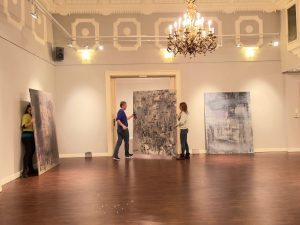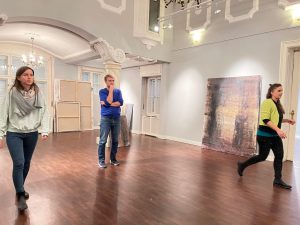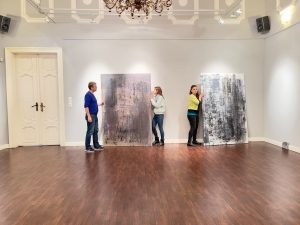Kitti Kovács, painter – „From what the World is made from” titled exhibition.
Opening speech by: Zopán Nagy photographer, poet
Curator of the exhibition: Maria B. Raunio artist
The exhibition is open till 12th of November 2021 weekdays from 11:00–16:00, or at a different time by appointment.
Videó vágás, utómunka: PAF – Pintér András Ferenc



